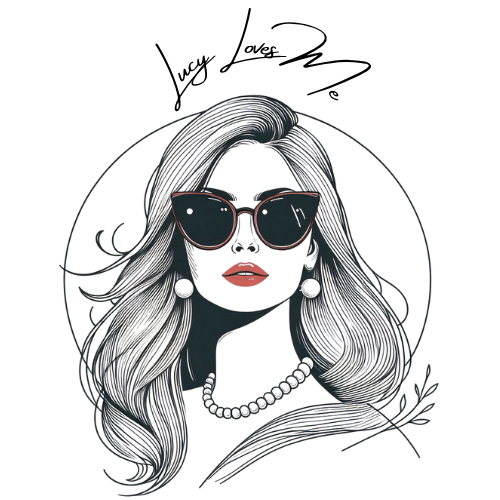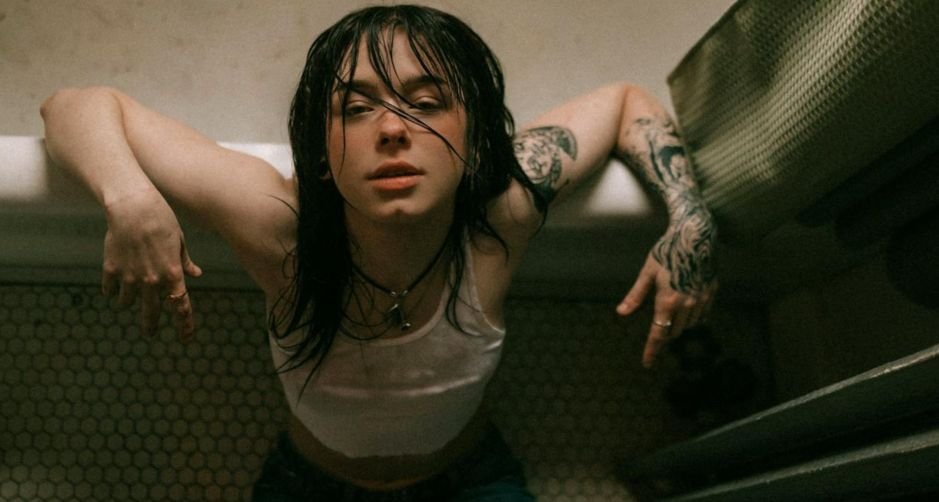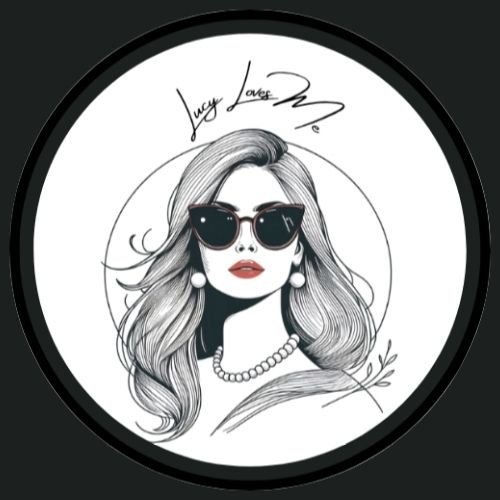Charli XCX didn’t just release an album in 2024. She accidentally sparked a full-scale aesthetic rebellion that had been simmering for years.
When brat dropped in June with its lime green artwork and grimy club beats, it felt less like a calculated marketing move and more like a middle finger to every polished Instagram grid that came before it.
The album declared war on perfection. And somehow, an entire generation was ready for battle.
The 2000s Sound Nobody Asked To Remember
The term “indie sleaze” didn’t exist until 2021, when TikTok users started mining the 2007-2014 era for content gold.
Back then, bands like The Strokes, Interpol, and Arctic Monkeys dominated the UK and US club scenes with music that was angular, energetic, and deliberately rough around the edges.
Peace Okezie, who records as Master Peace, grew up worshipping this era. “I wanted to be Pete Doherty,” he told Rough Trade.
“The band had that sticky dance floor sound that you couldn’t find anywhere else.” The Libertines, Bloc Party, LCD Soundsystem, Justice… these acts weren’t making music for Spotify playlists.
They were soundtracking actual nights out where your camera roll from a digital point-and-shoot ended up as a public Facebook album by morning.
Fashion matched the sound. Kate Moss at Glastonbury 2008 in ripped tights and smudged eyeliner became an icon precisely because she looked like she’d been up all night.
The Instagram account @indiesleaze has built a following of over 400,000 by documenting this era, and the comments always say the same thing: “this is when people were actually cool.”
But here’s what made indie sleaze different from other nostalgic music trends: nobody was following a manual.
You couldn’t buy your way into it with the right brands. MySpace blogs and word-of-mouth ruled discovery, not algorithms.
How Brat Brought It All Back
Fast forward to 2024. Charli XCX told British GQ she “wanted to create this world of that 2000s flip phone, cameras flashing, live fast, die young.”
The result was brat, an album that rejected every trend in contemporary pop production.
Modern pop typically aims for pristine vocal production, carefully tuned harmonies, and beats engineered for maximum streaming appeal. Charli went the opposite direction.
The production is intentionally rough. Her vocals on tracks like “Von Dutch” sound like they were recorded in a single take.
“You’re obsessing, just confess it, put your hands up / It’s obvious I’m your number one,” she sings with the kind of unfiltered confidence that sounds more drunk-girl-in-the-bathroom than pop princess.
When asked what brat essentials were, she answered: “a pack of cigs, a Bic lighter and a strappy white top. With no bra.”
This came as a direct contrast to summer 2023’s clean girl aesthetic, which had dominated social media with its beige minimalism, slicked-back buns, and $21 matcha lattes.
Catherine White, writing for A-Line Magazine, captured the shift: brat is “cigarette butts scattered on the floor, ripped tights, smudged eyeliner, and lingering at the club long after the lights have turned on.”
What Changed in Pop Music
Kesha understood the assignment. Her 2024 track “Joyride” brought back the exact kind of trashy Eurodance energy that defined early 2010s club pop.
After years of fighting for creative control and surviving industry trauma, she returned with a song that prioritised fun over careful image management.
The shift isn’t just about individual artists. It’s about how Gen Z consumes and creates music content.
Miel Wewerka, a student at Dartmouth College, noted that younger listeners are becoming more interested in music that sounds unfinished, impulsive, even silly.
“When Ice Spice drops a line about farts, it’s sort of fun to enjoy it just because it’s so goofy and playful,” she told The Dartmouth.
Compare this to the 2010s, when pop stars were expected to be aspirational at all times. Now, vulnerability and chaos sell better than perfection.
The Reddit thread discussing Charli’s “Girl, So Confusing” called it “conceptually, this might be the best track Charli has ever made,” specifically because it captures “miscommunication causing a rift between two people who didn’t mean for that to happen.”
The Lorde remix took it further. Two major pop stars openly dissecting their complicated friendship felt radical in an industry that typically manufactures narratives about female rivalry.
Julia Fox weighed in on TikTok: “I hope you realise how lucky we are to be alive at the same time as this record. Girls are conditioned to see each other as competitors, but really we are teammates.”
Why Gen Z Bought In
Here’s the economic context that matters: a third of UK nightclubs have shut down since COVID-19. Gen Z increasingly skips drinking because of cost-of-living pressures. Housing feels impossible. Social media promised connection but delivered performance anxiety instead.
Wewerka argues that “the indie sleaze resurgence reflects our generation’s desire to reject the overly rigid trends we saw come about as a response to the lack of precedent during COVID.”
The pandemic made everyone desperate for control, which manifested as the clean girl aesthetic. Morning routines. Wellness journals. Everything photographable and Instagram-ready.
But that level of self-surveillance gets exhausting.
There’s also historical precedent. Recession pop tends to favour escapist, high-energy music. Blues and swing dominated during the Great Depression.
Disco and punk exploded during the stagflation of the 1970s. After the 2008 financial crisis, Kesha’s “Tik Tok” and LMFAO’s party anthems topped charts. Economic anxiety makes people want to dance first and think later.
Where Does Pop Go From Here?
The music industry is already scrambling to respond. Kate Spade released a “brat starter pack” of lime green accessories. Fashion brands pivoted hard toward the aesthetic.
Even Kamala Harris’ presidential campaign adopted brat imagery, earning $15.9 million in media impact value within 48 hours.
But commercial adoption kills authenticity fast. Once H&M starts selling “indie sleaze starter packs,” does the whole thing become just another TikTok aesthetic trend with a shelf life of three months?
Peace Okezie’s debut album, “How To Make A Master Peace,” tries to channel indie sleaze influences like early Calvin Harris and Justice.
But he’s working in a completely different industry landscape than The Strokes faced in 2001. Back then, you could blow up through blog buzz and word-of-mouth. Now you need TikTok virality, playlist placements, and algorithmic approval.
The irony is thick. Artificial intelligence tools are getting better at replicating established genres, which should theoretically push artists toward more experimentation.
Native Instruments’ 2025 trend report suggests that “dirty aesthetics” will define the year ahead, with artists embracing raw production, unfiltered lyrics, and club chaos.
But can you plan spontaneity? The indie sleaze bands of the 2000s weren’t trying to fit an aesthetic.
Arctic Monkeys didn’t sit around discussing how to look disheveled. The Libertines’ chaotic energy came from actual chaos, not a mood board.
The Pendulum Always Swings
Brat worked because Charli XCX genuinely didn’t seem to care if you liked it or not. The album oscillates between arrogance and insecurity, sometimes within the same song.
“Girl, So Confusing” is painfully vulnerable. “Von Dutch” is pure ego. Nothing is carefully smoothed over or explained away.
Whether indie sleaze represents a genuine cultural shift or just another nostalgia cycle, it’s already changed the conversation around what pop music can sound like.
Clean production and careful image management will always have a place. But right now, audiences are responding to artists who sound human instead of algorithmic.
Helen Deng, another Dartmouth student, observed that Greek life events have shifted toward “maximalist” themes like mob wife aesthetics and Saltburn-inspired parties. “It’s been really fun to go big or go home,” she said. That impulse, to embrace excess over restraint, feels like the opposite of algorithm culture.
The question isn’t whether indie sleaze will last. Nothing lasts. The question is whether pop can hold onto some of this energy once the trend cycle moves on.
Can artists keep making music that sounds like it came from actual late nights instead of carefully scheduled studio sessions? Can the industry reward risk-taking instead of just talking about it?
Do you think sloppy pop beats polished perfection? Share your favourite club-chaos track below.
?


